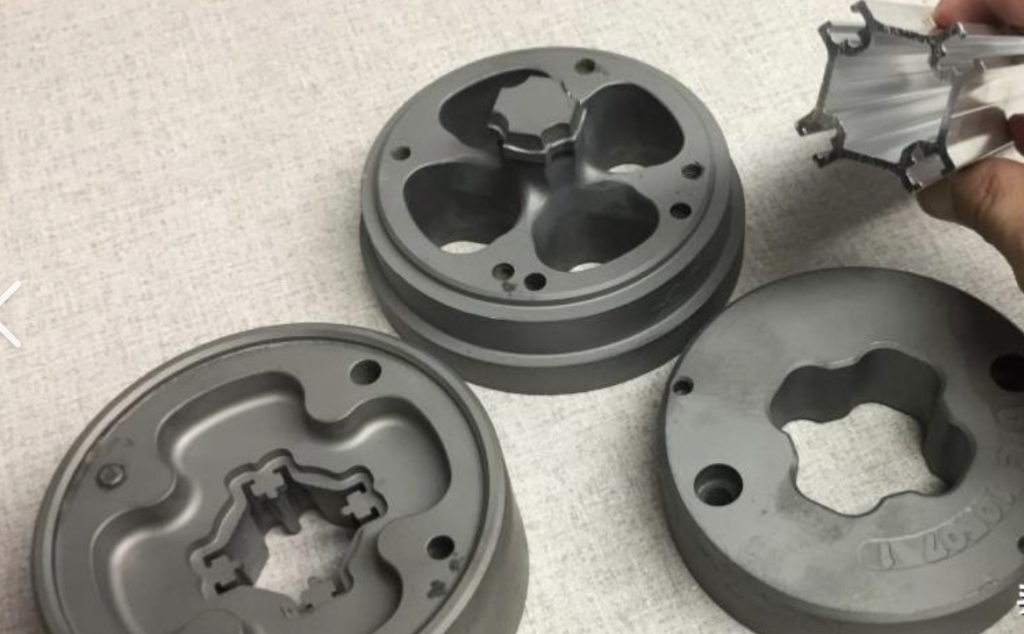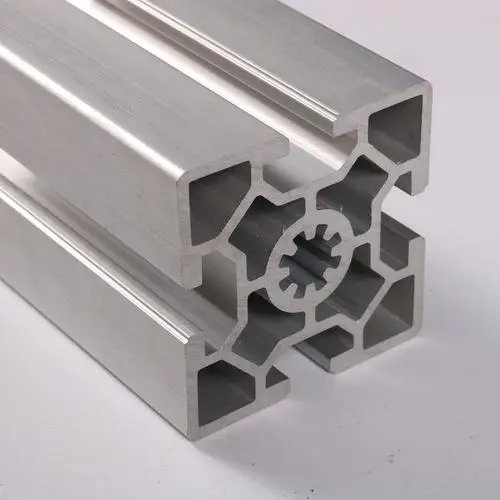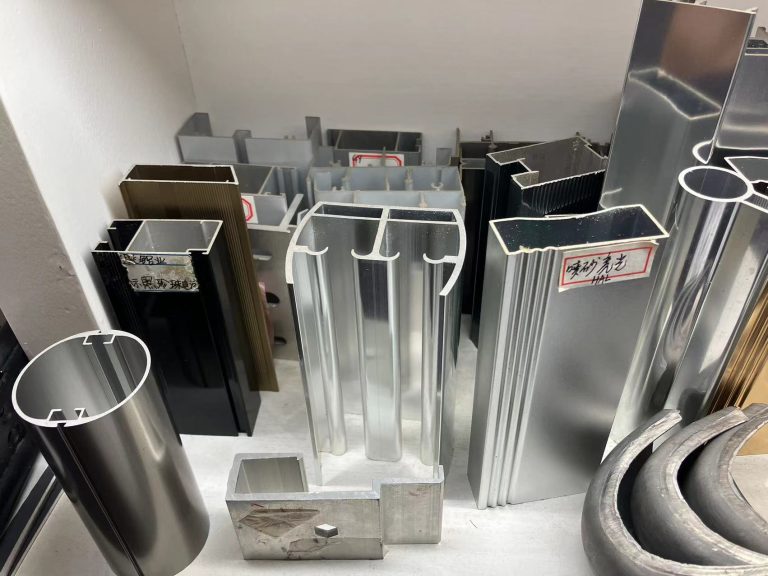The Ultimate Guide to Aluminum Extrusion Dies: Types and How They Work

Aluminum extrusion dies are must-haves in manufacturing. They turn aluminum alloy billets into profiles used in the automotive, construction, and electronics industries. These dies dictate the cross-sectional shape of aluminum components to ensure quality and efficiency of production.
This article covers the types of aluminum extrusion dies and how they work. Solid dies for simple shapes, hollow dies for complex cavities and semi-hollow dies for hybrid designs. By understanding these tools, manufacturers can improve their processes and make products to order.
What Is an Aluminum Extrusion Die?
An aluminum extrusion die is a specialized tool used to shape aluminum into specific cross-sectional profiles during the extrusion process. It consists of two main components:
- Die Body: The core structure containing the cavity that determines the profile’s shape.
- Die Accessories: Supporting elements that enhance durability and ensure stability under high pressure and temperature.
The die is typically made from hardened steel, such as H13, to withstand the extreme forces—often exceeding 15,000 tons—and temperatures involved in extrusion. The opening within the die is precisely engineered to match the desired dimensions and geometry of the final product, whether solid, hollow, or semi-hollow.
How It Works
The extrusion die functions as a mold through which softened aluminum alloy is pushed using hydraulic pressure. As the aluminum passes through the die’s cavity, it takes on the exact shape of the opening, resulting in continuous profiles with consistent dimensions. This process is critical for manufacturing high-precision components used in industries like construction, automotive, aerospace, and electronics.
Key Features of Extrusion Dies
- Material: Made from heat-treated steel for strength and wear resistance.
- Design: Tailored to produce profiles with intricate shapes and tight tolerances.
- Durability: Built to endure repeated use under extreme operating conditions.
By enabling efficient and accurate shaping of aluminum, extrusion dies play a vital role in producing lightweight yet durable components for diverse applications.
Why Precision in Extrusion Dies Matters for Manufacturers?
Extrusion dies are essential tools in aluminum extrusion, shaping profiles and enhancing production efficiency. Their role can be divided into three core functions:
1. Shaping Aluminum Profiles
Extrusion dies enable the precise molding of aluminum into specific cross-sectional shapes. Aluminum is forced through the die’s openings under high pressure, creating profiles tailored to various applications. These dies act as molds, ensuring the aluminum takes on the desired form with accuracy.
2. Ensuring Profile Quality
The design and precision of extrusion dies to determine the quality of aluminum profiles. High-quality dies produce profiles with exact dimensions, smooth surfaces, and consistent mechanical properties. For instance:
- Dimensional Accuracy: Ensures profiles fit specific applications without additional modifications.
- Surface Finish: Produces smooth, defect-free surfaces for aesthetic or functional purposes.
- Structural Integrity: Maintains strength and durability required for demanding uses like construction or transportation.
3. Enhancing Production Efficiency
Well-designed extrusion dies to streamline production by reducing material resistance during extrusion. This leads to faster cycles, lower energy consumption, and reduced equipment wear. Key benefits include:
- Faster Extrusion Speeds: Shortens production time while maintaining quality.
- Cost Savings: Minimizes waste and operational expenses over time.
- Improved Workflow: Reduces downtime caused by die-related issues.
Practical Importance of Extrusion Dies
Extrusion dies are like precision tools in a craftsman’s workshop—without them, achieving consistent results would be impossible. Poorly designed dies can lead to defects like uneven shapes or wasted material, while optimized dies ensure flawless profiles ready for immediate use in industries such as construction, automotive, and aerospace.
By understanding their role in shaping, quality control, and efficiency improvement, manufacturers can leverage extrusion dies to maximize productivity and deliver high-performance aluminum solutions.
Aluminum Extrusion Die Types
Solid Dies
Solid dies are simple molds designed without internal shunt structures. The die hole mirrors the cross-sectional shape of the desired profile, making the design straightforward. Key components include the die hole and a working belt.
Molten aluminum is pushed directly through the die hole during extrusion to form solid profiles. These dies commonly produce items such as aluminum bars, plates, and solid tubes. They are also suitable for manufacturing basic structural parts like connectors and supports.
Advantages of Solid Dies
- Cost Efficiency: Simple design reduces production costs.
- Process Reliability: Stable extrusion ensures consistent results.
- Versatility: Ideal for a wide range of solid aluminum products.
Hollow Dies
Hollow dies feature more complex designs, including shunt holes, shunt bridges, welding chambers, die cores, and working belts. Examples include tongue-shaped dies and plane-shunt combination dies.
In the extrusion process, molten aluminum is divided into multiple streams by the shunt holes. These streams are then fused in the welding chamber under high pressure to create hollow profiles. Hollow dies are used to manufacture products such as pipes, window frames, and automobile door frames. They are also suitable for creating intricate designs requiring internal cavities.
Advantages of Hollow Dies
- Complex Profiles: Capable of producing hollow shapes with detailed cross-sections.
- Design Flexibility: Wall thickness and geometry can be adjusted by modifying shunt hole configurations.
- Broad Applications: Suitable for both simple hollow profiles and complex structural components.
Key Takeaways
Understanding the differences between solid and hollow dies allows manufacturers to choose the right tool based on product complexity, cost considerations, and application requirements. Solid dies excel in simplicity and cost-effectiveness, while hollow dies offer greater flexibility for intricate designs.
How Long Does Aluminum Extrusion Die Last?
The lifespan of aluminum extrusion dies varies based on usage conditions, material quality, and maintenance practices. On average, these dies remain functional for 2 to 3 years before requiring replacement. However, this is not a fixed timeframe, as several factors can extend or shorten their durability.
Factors Affecting Die Longevity
- Production Volume: Dies used for high-volume manufacturing experience faster wear and tear.
- Profile Complexity: Extruding intricate shapes under high pressure can reduce the die’s lifespan.
- Operating Conditions: Extreme heat or pressure accelerates degradation, while controlled environments promote longevity.
- Material Quality: High-grade steel or alloy dies typically last longer than lower-quality alternatives.
- Maintenance Practices: Regular cleaning, polishing, and inspections help prevent premature failure.
Common Lifespan Scenarios
- Short Lifespan (<1 Year): Dies may fail early due to severe damage, improper handling, or high-stress applications.
- Extended Lifespan (>3 Years): Dies used intermittently for simpler profiles and maintained consistently can remain operational for many years.
Practical Tips to Maximize Die Longevity
- Perform routine inspections to identify and address minor wear before it escalates.
- Use appropriate lubricants to reduce friction during extrusion processes.
- Avoid overloading dies with excessive pressure or temperature beyond their design limits.
- Replace worn components promptly to maintain consistent performance.
By understanding these factors and implementing proactive measures, manufacturers can optimize the lifespan of aluminum extrusion dies while reducing downtime and replacement costs.








